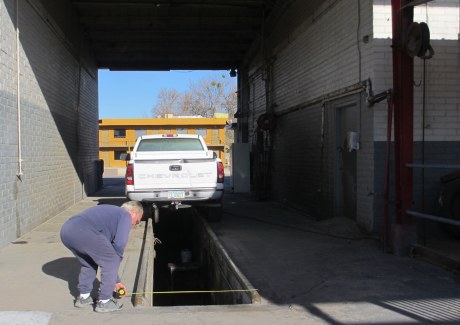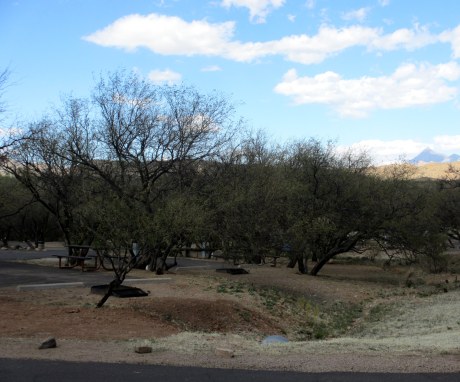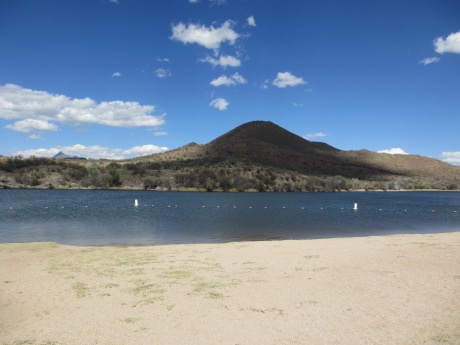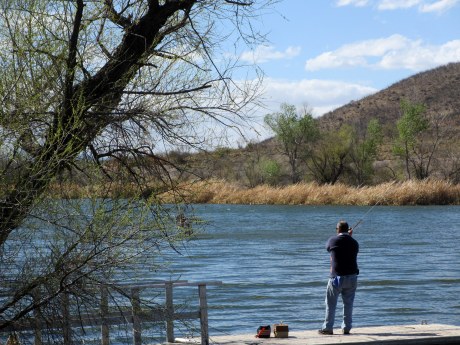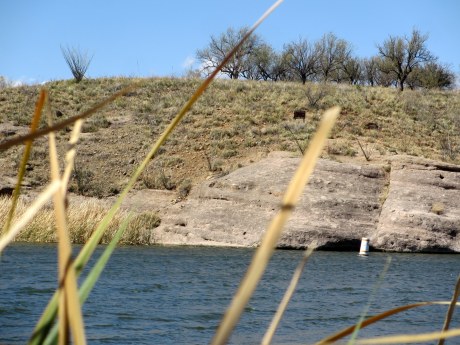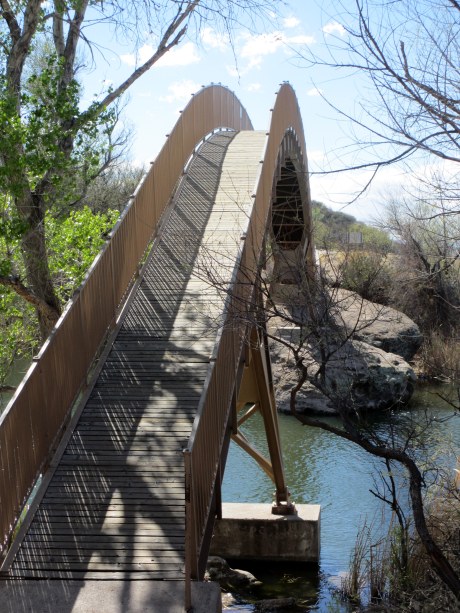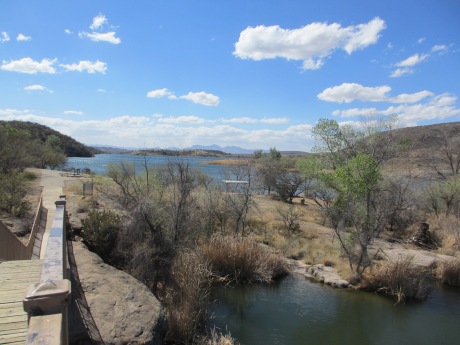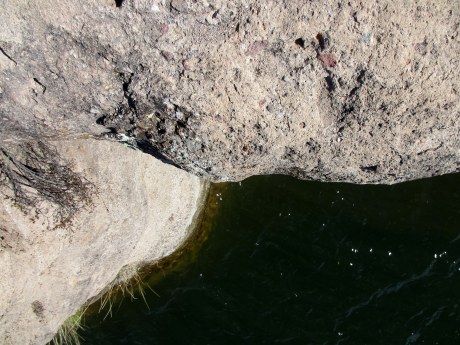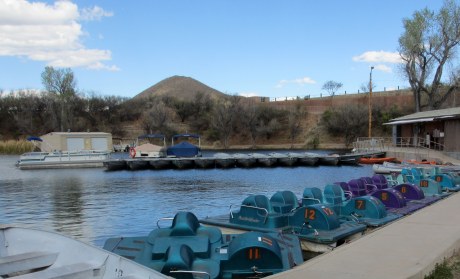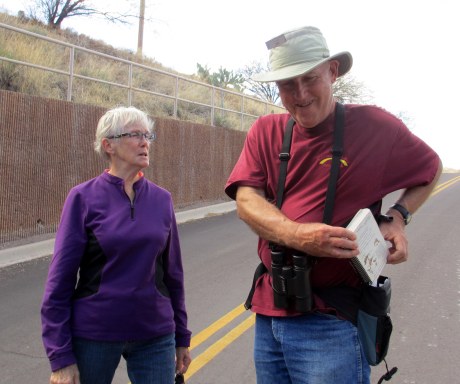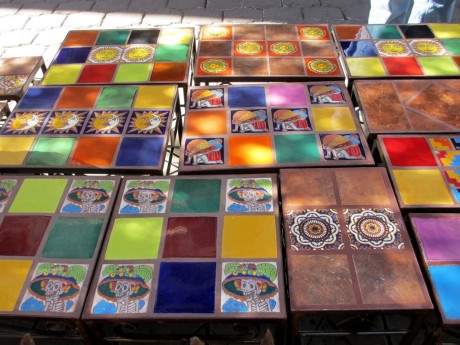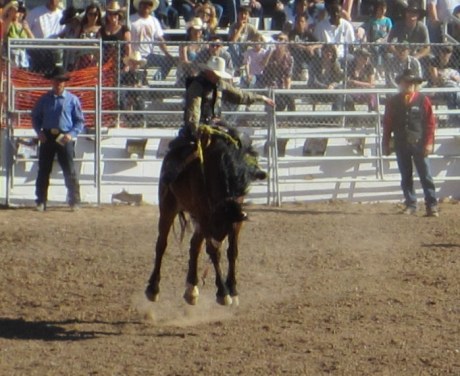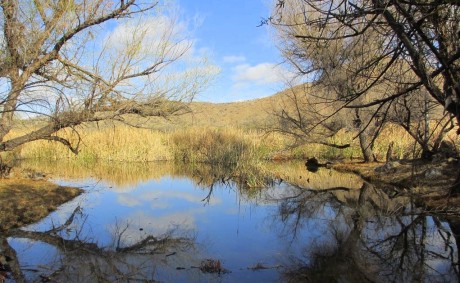
We began our bird walk on a marked trail, climbing a rocky point and then descending to a flat marshy area. It was 9 a.m. and chilly. We found ducks immediately enjoying the water.

I named this spot “golden pond”. These ducks are common in Arizona but do not show up in many bird identifying websites I looked into.

A family of mallards off in the distance.
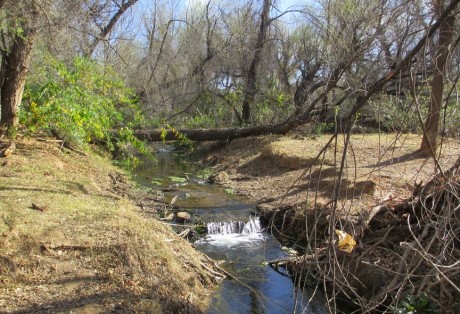
The birding area follows the marsh and Sonoita creek. The trees look dead. Tangled brush and leaves cover the ground. Paths run off in every direction. We found the woods full of birders. We knew to be quiet and only spoke to people in a whisper. If we met people ahead of us, we would change directions and choose another path to allow each couple quiet space of their own.
 And, we did see birds. Lots of them. We don’t know their names but found their voices filling the woods enjoyable. We would stop often and listen, then try and locate the bird from the sound.
And, we did see birds. Lots of them. We don’t know their names but found their voices filling the woods enjoyable. We would stop often and listen, then try and locate the bird from the sound.
I’m better at identifying plants and enjoyed a taste of watercress. It grew prolifically along Sonoita Creek.

Whether we saw birds or didn’t, we enjoy walking in the woods and always find something of interest. Someone built a cairn.

Is this a natural rock formation? Or man-made, we wondered.
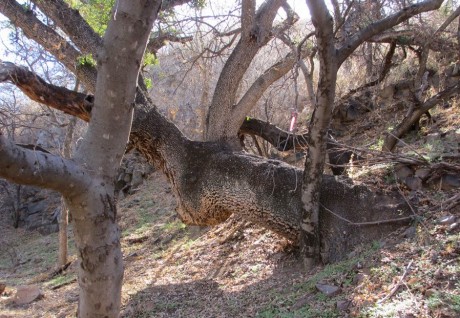
We happened upon this old, gnarled giant growing horizontally from the bank. Sonito Creek once poured through here and this tree hung over the water.
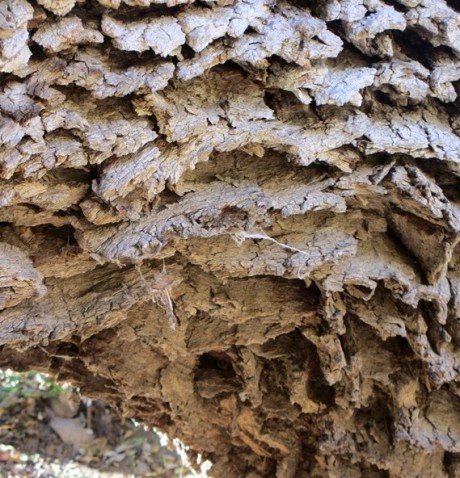
The bark was beautiful and shaggy.

From that angle, it is hard to believe the main trunk can hold up several heavy trunks and it’s crown.

Mushrooms slowly eating away at dead wood.
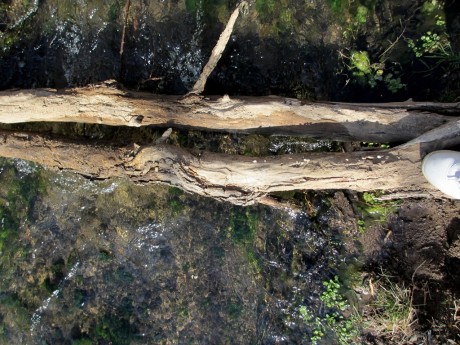
Sonito Creek winds like a snake through this preserve and I crossed it several times on make-shift bridges.
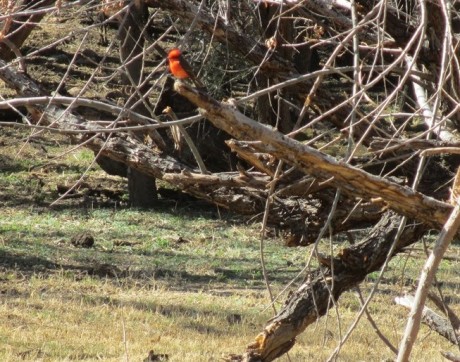
The most colorful bird we saw was the vermillion flycatcher. I was surprised the picture turned out as good as it did considering our equipment and how fast this little guy moved from place to place. We saw warblers and flickers and a small flock of silver winged, green and yellow breasted birds so exquisitely tiny, flitting about in the trees as though purposely putting on a show.
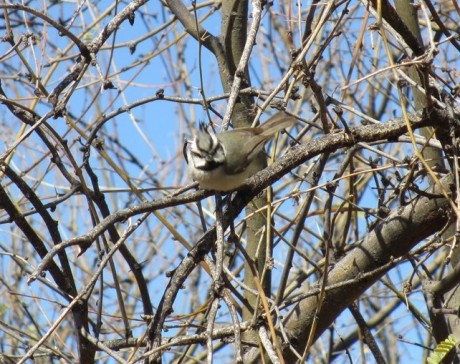
With my camera, if I can get close enough, the result is decent as this little crested fellow, one out of probably seven or eight tries.

And I got two credible pictures of this noisy fellow.
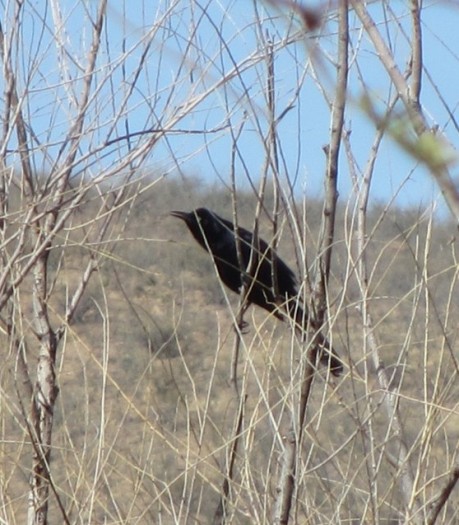
We could see he was calling to a mate, or prospective mate. While in the woods we met a birder with a camera mounted on a heavy mono pod with multiple lenses three feet long. The end lens was about 10 inches in diameter. Now, that is birding equipment. Fascinating stuff. I asked if I could take his picture and he turned his back on me an walked off. I guess some birders are as illusive as their quarry.

Bet he didn’t get a picture of this cowbird!!
